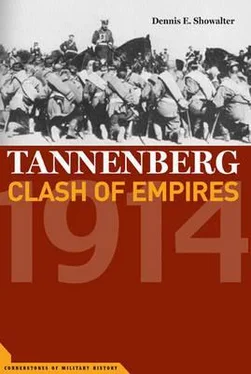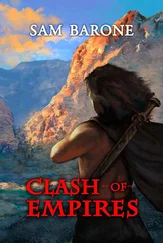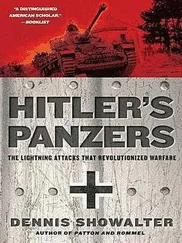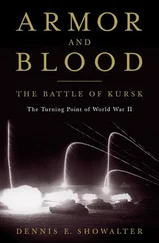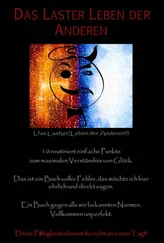45Adolf Tappen to Reichsarchiv, Nov. 11, 1927, BA-MA, Nachlass Tappen, N56/4; Wild von Hohenborn to his wife, June 7, 1915, in Wild von Hohenborn, 64 ff; Kraft, Staatsraison und Kriegführung, 63 ff.; Ritter, Sword and Scepter III, 66 ff.; Falkenhayn, German General Staff, 82 ff.
46August von Mackensen, Briefe und Aufzeichnungen, ed. F. W. Foerster (Leipzig, 1938), 137 passim; Hans Meier-Welcker, Seeckt (Frankfurt A.M., 1967), 39 passim.
47Ludendorff, Ludendorff’s Own Story I, 171 ff.; and Falkenhayn, German General Staff, 155 ff., present the views of the principal adversaries. An excellent recent survey of Germany’s eastern policies in 1915 is Volker Ullrich, “Entscheidung im Osten oder Sicherung der Dardanelles das Ringen um den Serbienfeld-zug 1915,” Militärgeschichtliche Mitterilungen XXXII (1982), 45–63.
48Max Weber, Gesammelte politische Schriften, 2nd ed. (Tübingen, 1958), 120 passim.
49Horst-Günther Linke, Das zarische Russland und der Erste Weltkrieg. Diplomatic und Kriegsziel 1914–1917 (Munich, 1982), is the best recent overview of this subject.
50Volker Ullrich, “Zwischen Verhandlungsfrieden und Erschöpfungskrieg. Die Friedensfrage in der deutschen Reichsleitung Ende 1915,” Geschichte in Wissenschaft und Unterricht XXXVII (1986), 397–419. The quotation is from 403.
51Michael Geyer, “German Strategy in the Age of Machine Warfare, 1914–1945,” in Makers of Modern Strategy from Machiavelli to the Nuclear Age, ed. Peter Paret (Princeton, N.J., 1986), 534 ff.
52Cf. inter alia Jack Snyder, “Perceptions of the Security Dilemma in 1914,” in Psychology and Deterrence, ed. R. Jervis, R. N. Lebow, and J. G. Stein (Baltimore, 1985), 153–179; and Stephen Van Evera, “Why Cooperation Failed in 1914,” World Politics XXXVIII (1985), 80–117.
53Ludendorff, Ludendorff’s Own Story II, 583 passim.
54Cf. Woodruff D. Smith, The Ideological Origins of Nazi Imperialism (New York, 1986), 166 ff.; and Shanafelt, Secret Enemy, 67 ff.
55Fritz Fischer, Juli 1914: Wir sind nicht hineingeschlittert (Berlin, 1983), 20–21.
56Reichenau to foreign office, Aug. 20, 1914, in Politisches Archiv des Auswärtigen Amtes, Krieg 1914, Unternehmungen und Aufweigelung gegen unsere Feinde, WK 11c Geheim (hereafter cited as PAAA).
57Lemberg Consulate to Tschirsky; Tschirsky to foreign office, Aug. 11, 1914, PAAA, Krieg 1914, WK 11 a, Ukraine.
58Tschirsky to foreign office, Oct. 11, Oct. 13, 1914; Jagow to Zimmermann, Aug. 31, 1914, ibid.
59Szogeny to Jagow, Aug. 15, 1914; Tschirsky to foreign office, Aug. 21, 1914, PAAA. Krieg 1914, WK 14 a, Verwaltung besetzten Gebiet in Russland.
60Steenbiss to Prussian ministry of public works, Aug. 11, 1914; Worysch to 8th Army command, Aug. 12, 1914, ibid.
1Dietrich Orlow, Weimar Prussia, 1918–1925: The Unlikely Rock of Democracy (Pittsburgh, 1986), 241; Andreas Dorpalen, Hindenburg and the Weimar Republic (Princeton, N.J., 1964).
2The design and its history are summarized in George L. Mosse, The Nationalization of the Masses (New York, 1975), 69 ff. Cf. also Erich Maschke, “Die Geschichte des Reichsehrenmals Tannenberg,” and Johannes Kruger, “Bau-liche Gedanken um das Reichsehrenmal Tannenberg und seine Einfügung in die Landschaft,” in Tannenberg. Deutsches Schicksal, deutsche Aufgabe, ed. Kuratorium für das Reichsehrenmal (Oldenburg, 1935), 199–247.
3Konrad Wagner, ed., Tannenberg und seine Heldengraber. Ein Lesebuch von deutscher Grösse, 2nd ed. rev. (Osterode, 1936).
4For Ludendorff’s postwar career see particularly Richard Piazza, “Ludendorff: The Totalitarian and Völkisch Politics of a Military Specialist” (Ph.D. Dissertation, Northwestern University, 1969).
5August von Mackensen, Briefe und Aufzeichnungen, ed. W. Foerster (Leipzig, 1938), 363 passim.
6Lyncker to François, Jan. 1, 1916; letters of Aug. 7 and Aug. 10, 1917, by two of VII Corps’ regimental commanders, in Bundesarchiv-Militärarchiv, Nachlass François, NL 274/16.
7Information on the wartime experiences of the Tannenberg divisions is drawn from the specific entries in Histories of the Two Hundred and Fifty-One Divisions of the German Army which Participated in the War (1914–1918), ed. by General Staff, AEF (Washington, D.C., 1920), supplemented from regimental histories.
8Quoted in Williamson Murray, The Change in the European Balance of Power, 1918–1939 (Princeton, 1984), 149.
9Cf. inter alia Klaus-Jürgen Müller, General Ludwig Beck (Boppard, 1980); Robert J. O’Neill, “Doctrine and Training in the German Army, 1918–1939,” in The Theory and Practice of War, ed. M. Howard (New York, 1965), 143–165; and Charles Messenger, The Art of Blitzkrieg (London, 1976).
10Hans Gatzke, “Russo-German Military Collaboration During the Weimar Republic,” American Historical Review LXIII (1958), 565–597.
11Erich Wagner, “Gedanken über den Wort von Kriegserfahrung,” Militär-wissenschaftliche Rundschau II (1937), 231–245.
12Most particularly in the work of Jürgen Förster. Typical is “New Wine in Old Skins? The Wehrmacht and the War of ‘Weltauschaungen,’ 1941,” in The German Military in the Age of Total War, ed. W. Deist (Dover, N.H., 1985), 304–322. Cf. also Omer Bartov, The Eastern Front, 1941–45: German Troops and the Barbarization of Warfare (New York, 1986).
13Cf. Heinz Burger, Bei Tannenberg zwei Schlachten. Ritter und Feldherren aufWacht im Osten (Stuttgart, 1935); Rudolf van Wehrt, Tannenberg (Berlin, 1934); Rolf Bathe, Tannenberg. Der Einsatz des letzten Mannes (Berlin, 1935).
14Andreas Hillgruber, Der Zusammenbruch im Osten 1944145 als Problem der deutschen Nationalgeschichte und der Europäischen Geschichte (Wiesbaden, 1985), 13; Michael Salewski, “Der Erste Weltkrieg-ein deutsches Trauma,” Revue Internationale d’Histoire Militaire LXII (1985), 184.
15Cf. inter alia Stefan Kuczynski, Wielka wojna z Zakonem Krzyzackim w latach 1409–1411 (Warsaw, 1955; rev. ed. 1960); and Spor o Grunwald rozpiawy polemiczne (Warsaw, 1972).
The nature of the chapter references in this volume make a full bibliography redundant. My principal archival sources were the holdings of the German foreign office in Bonn and the Bundesarvhiv-Militärarchiv in Freiburg. From Bonn, the Deutschland, Russland, and Krieg 1914 files were particularly valuable. The BA-MA collection of private papers includes the Nachlässe of Max Hoffmann, Hermann von François, and Otto von Below. The latter is also a rich source of information on the prewar army. The Nachlässe of Wilhelm Gröner and Adolf Tappen helped reconstruct prewar planning for the defense of East Prussia, while the Nachlass of F. W. Foerster contains correspondence clarifying—or attempting to clarify—several controversial points of the campaign. The records of the Admiralstab der Marine in the German Navy Archive include a good deal of significant correspondence with the general staff, as well as the navy’s own analyses of German strategic and geographical positions.
The exhaustive and exhausting literature on specific aspects of the contributions of Russo-German hostility to the outbreak of World War I is best traced through the footnotes. Paul Kennedy, The Rise and Fall of the Great Powers (New York, 1987), incorporates the most recent, and by far the most familiar, statement of Russia’s relative weakness. James Joll, The Origins of the First World War (New York, 1984), emphasizes Europe’s structural weaknesses; Volker Berghahn, Germany and the Approach of War in 1914 (New York, 1973), differs from its companion volumes in the St. Martin series, The Making of the 20th Century, (Zara Steiner on Britain, D. C. B. Lieven on Russia, and John Keiger on France) in stressing the aggressive intentions of his subject. Walter Laqueur, Russia and Germany: A Century of Conflict (Boston, Toronto, 1965), deserves renewed attention, particularly in a current context stressing the possibilities of long-term German-Soviet rapprochement. The new translation of Dietrich Geyer, Russian Imperialism: The Interaction of Domestic and Foreign Policy, 1860–1914 (Leamington Spa, 1987), establishes for an English-speaking audience the fence-moving nature of Russian expansionism prior to World War I, and how it differed essentially from imperialism’s more familiar forms, colonialism and economic penetration.
Читать дальше
